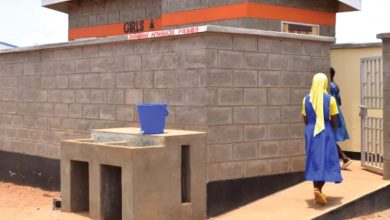Coughs, urine…and stools
New findings show the search for effective TB screening is leaving nothing to chance, our Staff Writer JAMES CHAVULA writes.
For decades, health workers in Malawi have been telling patients to cough out sputum for tuberculosis testing, but it can be difficult to get ailing children to spit up.

In some hospitals, X-ray machines have become handy in detecting TB cases that go unnoticed in respiratory samples.
Since last year, testing urine for traces of genes of TB germs has cut the long wait for diagnosis of the world’s deadliest infectious disease, especially among people living with HIV.
According to World Health Organisation (WHO), the disease kills about 5 000 people every day. For Blantyre district health officer Dr Charles Kawalazila and his clinical staff, the emerging science means it is simpler to ensure all presumed cases are tested and those diagnosed with the disease start treatment immediately.
However, they require an array of tactics to obtain samples from ailing children below five. At worst, they require experts to insert a tube into a child’s nose to extract a sample from the stomach.
“We use several techniques. First, we assess vital signs. To get sputum, sometimes, we make the child inhale some chemicals to stimulate them to cough. Others use X-ray. The use of tubes is the last resort. For this procedure, children are referred to specialised service providers as testing is not possible at the health centre. It requires special expertise and experience. It subjects the child to a lot of pain,” said Kawalazila.
Health workers say the use of tubes is painful, stressful and complex for the child.
New Science
A recent study by KNCV Tuberculosis Foundation shows testing stools offers a simple, painless and effective way to extract samples from their bowels.
The Dutch nonprofit organisation announced the stool-based diagnosis on Thursday at the 49th Union World Conference on Lung Health in the Hague, the Netherlands.
The tests the foundation’s researchers conducted in collaboration with the national TB control programmes of Ethiopia and Indonesia detected TB in all children who also had positive respiratory samples.
The absence of false negative stool samples makes it a potential global life-saver by ensuring millions of children at risk of TB and multidrug-resistant TB (MDR-TB) are tested, says KNVC Tuberculosis Foundation executive director Kitty van Weezenbeek.
“If further testing confirms the preliminary findings in Indonesia and Ethiopia, the potential of this method is enormous,” she said. “Being able to diagnose TB and MDR-TB from stool would mean that we have a method in our hands that can diagnose TB at the lowest healthcare level and can bring testing to hundreds of thousands of people. In that way, children can now get a microbiologically confirmed TB diagnosis at primary health centres, where that is currently not possible.”
According to The International Union Against Tuberculosis and Lung Diseases executive director José Luis Castro, identifying thousands of children with TB and multidrug-resistant TB (MDR-TB) disease would drastically reduce the numbers of children under five dying from TB.
No child should die
Children with TB rarely die when they receive standard treatment for the disease. Currently, an estimated 239 000 children die every year from TB, but 90 in every 100 children who die from the disease worldwide went untreated.
“No child should die from TB,” said Castro. “There is an urgent need to drastically step up investment in research and development that can deliver new and better diagnostic tools such as this stool test. Promising breakthroughs of this kind are needed if we are to make inroads into preventing illness and death from both active and MDR-TB.”
The country adopted the urine-based sample, from which Gene Xpert tests yield results in 30 minutes, to improve diagnosis of the diseases which affects nearly 17 000 people, according to the National TB Control Programme (NTCP) in Lilongwe.
According to NTCP programme director Dr James Mpunga, the breakthrough achieved by Dignitas International from 2015 to 2017 informed the Ministry of Health to change policy in view of the the contribution of newer diagnostic tests.
“The yield of the conventional methods in picking TB among HIV- positive patients is low. More sensitive methods are always welcome. Evidence on the effectiveness of Lam being a newer test is sought to help inform policy,” he told The Nation last year.
A TB-free world
Stool-based testing has not yet reached Malawi, but the new science points to simple TB detection among children who cannot spit up in traditional methods used to get sputum samples of presumed cases.
The method was under investigation for years, but it has been widely considered a difficult sample because stool contains many other bacteria and debris which encapsulate tuberculosis bacilli like a cocoon. To scientists, this makes it difficult to isolate the TB germs without multiple cleaning steps that require sophisticated equipment.
However, the KNCV study in Ethiopia involves mixing a sample of stool with a sample reagent buffer which comes with every Gene Xpert machine cartridge in bottles of 8 millilitres.
There were no false negative stool samples, the researchers announced.
The new test also identifies resistance to rifampicin, a symptom of for MDR-TB.
When told about the stool test, a clinician who handles TB samples in Thyolo, said: “The advancement in technology has a crucial role in TB diagnosis and control. We need the best diagnosis to stop TB.
“With such breakthroughs in science, I am confident a TB-free world is possible. It all begins with improving testing to ensure every person with TB is on treatment.”




